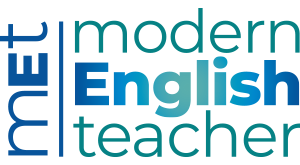In this series, Nicky Hockly explains aspects of technology which some people may be embarrassed to confess that they don’t really understand. In this article, she reveals what a MOOC is.
1. MOOC? Another acronym! What does this one stand for?
A MOOC is a Massive Open Online Course. And it does what the name suggests. It’s a course which is free of charge (open) to as many people who want to sign up (often a massive number) and it’s run online. Although such courses have been around for a number of years, they have only recently started to appear in the mainstream and educational press, with free online courses being offered by the likes of Stanford and Harvard universities. One can now read heartwarming tales like that of the student from Kazakhstan who took a Stanford MOOC in computer science, received a certificate and then landed a plum job (http://goo.gl/mr4MS).
2. Where does the MOOC movement come from?
The term MOOC emerged around 2008 via a group of academics in Canada. Early courses developed from an interest in ‘connectivism’ as a learning theory (social learning based on networks and conversations), and how Web 2.0 could facilitate and enhance these connections. However, MOOCs remained fairly unknown until in 2011 Stanford University ran one in Artificial Intelligence, which attracted thousands of sign-ups. Shortly after this, companies such as Udacity, edX and Coursera appeared. Udacity offers MOOCs for Stanford University, edX for MIT (Massachusetts Institute of Technology) and Harvard University, while Coursera is a consortium of international universities (33 at the time of writing) offering MOOCs in a wide range of disciplines.
3. How does a MOOC work?
You pay no fees to take a MOOC – they’re free. There will be a handful of tutors/facilitators and thousands (or even tens of thousands) of students. They can run over several weeks or months, with weekly topics and deadlines. Depending on the MOOC one takes, the learning materials may take slightly different forms. The more connectivist-orientated MOOCs – or cMOOCs – tend to have little or no content as such. Instead, there may be a few suggested weekly online readings or videos to watch, and learning develops through the participants discussing the contents or collectively solving issues, with particular emphasis placed on the online conversations that can develop via forums, blogs, weekly video-conferencing sessions and social network channels, such as Google+, Facebook and Twitter. Other MOOCs may have more formal learning content, such as access to recorded lectures and specially created content, with automatically graded exercises and quizzes, and the online conversations may not be the main focus. These are the socalled xMOOCs. Typically, any MOOC will have a core of active learners, and a larger body of ‘lurkers’ (passive onlookers). The xMOOCs run by Coursera, Udacity and edX can offer certificates of completion, and possibly some sort of assessment. What one doesn’t get, though, is a university ‘degree’ from any of these MOOCs.
4. Is there a downside?
Given the high percentage of lurkers and dropouts on MOOCs, there is some debate about whether the participants actually ‘learn’ anything, and how (or indeed whether) this learning should be assessed. Typically, one will benefit from a MOOC to the extent that one is prepared to contribute, so a certain amount of selfdiscipline is needed to get anything out of the experience. There is also some discussion about how these MOOCs can sustain a business model – after all, they are offered for free. The xMOOCs are sometimes seen as thinly-disguised marketing by institutions offering samples of their traditional course content for free online. But the fact is that there is a wide range of free online courses being offered by reputable educational institutions – whether they are xMOOCs or cMOOCs – and people who would like to can take part in courses for free.
5. Are there MOOCs for ELT?
There are several MOOCs about educational topics of interest to any educator. Recent offerings include a MobiMOOC on mobile learning, a PLENK MOOC about developing PLNs (personal learning networks), a Games MOOC looking at educational games, and EdFutures, a MOOC looking at how technology is transforming higher education. Stephen Downes’ Online Daily site (www.downes.ca/news/OLDaily.htm) is a good source of information about upcoming MOOCs in education. In the field of ELT, probably the closest that we currently have to MOOCs are the open online courses offered by SEETA (South Eastern Europe Teachers Associations: www.seeta.eu). These short courses (or mini-MOOCs) last a week or two, are offered by well-known ELT experts, and can attract several hundred teachers. Past offerings by SEETA include courses on mobile learning, using video, using digital games and digital literacies (I blogged about my own experiences of running the mobile mini-MOOC for SEETA at www.emoderationskills.com/?p=444 in 2011). All of SEETA’s past courses are archived and available on their website, where you can also keep an eye out for upcoming free courses. Happy MOOC-ing!
Nicky Hockly has been involved in EFL teaching and teacher training since 1987. She is Director of Pedagogy of The Consultants-E, an online teacher training and development consultancy. She is co-author of How to Teach English with Technology, Learning English as a Foreign Language for Dummies, Teaching Online, and Digital Literacies. She has published an e-book, Webinars: A Cookbook for Educators (the-round.com), and she maintains a blog at www.emoderationskills.com.
This article first appeared in English Teaching professional, Issue 84, January 2013



